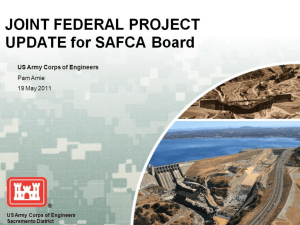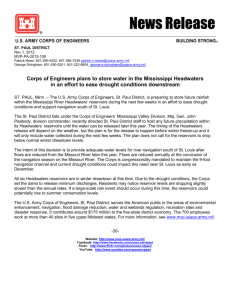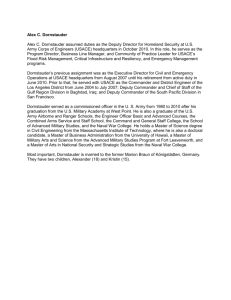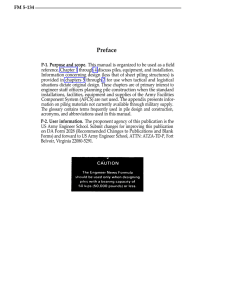ENGINEERING AND C B
advertisement
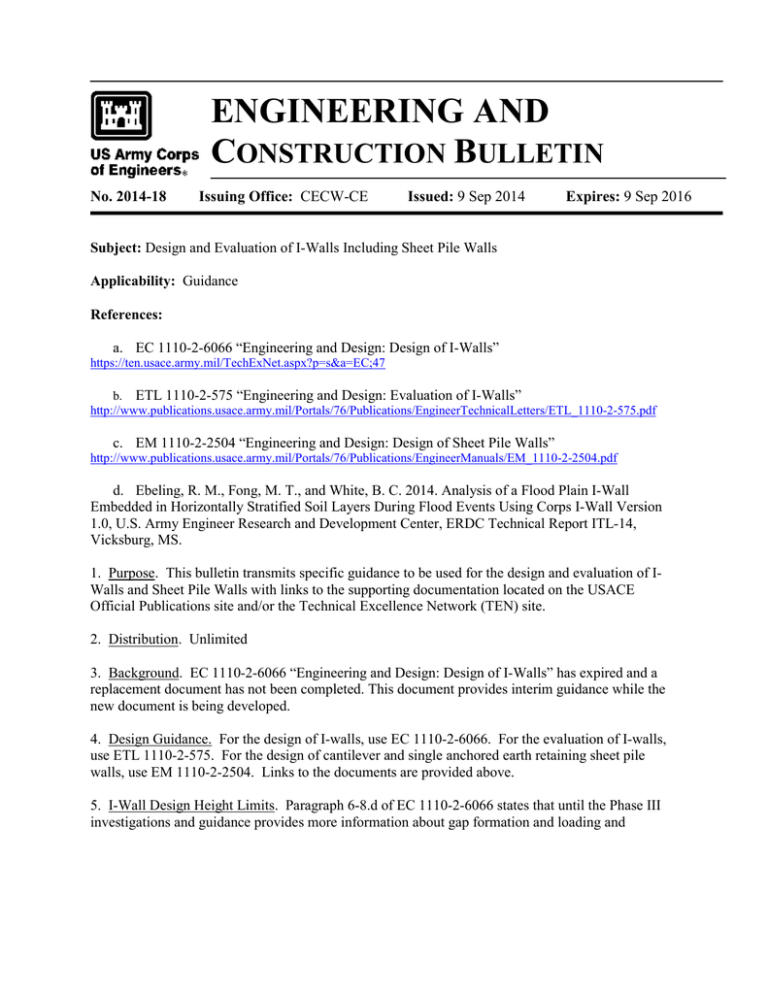
ENGINEERING AND CONSTRUCTION BULLETIN No. 2014-18 Issuing Office: CECW-CE Issued: 9 Sep 2014 Expires: 9 Sep 2016 Subject: Design and Evaluation of I-Walls Including Sheet Pile Walls Applicability: Guidance References: a. EC 1110-2-6066 “Engineering and Design: Design of I-Walls” https://ten.usace.army.mil/TechExNet.aspx?p=s&a=EC;47 b. ETL 1110-2-575 “Engineering and Design: Evaluation of I-Walls” http://www.publications.usace.army.mil/Portals/76/Publications/EngineerTechnicalLetters/ETL_1110-2-575.pdf c. EM 1110-2-2504 “Engineering and Design: Design of Sheet Pile Walls” http://www.publications.usace.army.mil/Portals/76/Publications/EngineerManuals/EM_1110-2-2504.pdf d. Ebeling, R. M., Fong, M. T., and White, B. C. 2014. Analysis of a Flood Plain I-Wall Embedded in Horizontally Stratified Soil Layers During Flood Events Using Corps I-Wall Version 1.0, U.S. Army Engineer Research and Development Center, ERDC Technical Report ITL-14, Vicksburg, MS. 1. Purpose. This bulletin transmits specific guidance to be used for the design and evaluation of IWalls and Sheet Pile Walls with links to the supporting documentation located on the USACE Official Publications site and/or the Technical Excellence Network (TEN) site. 2. Distribution. Unlimited 3. Background. EC 1110-2-6066 “Engineering and Design: Design of I-Walls” has expired and a replacement document has not been completed. This document provides interim guidance while the new document is being developed. 4. Design Guidance. For the design of I-walls, use EC 1110-2-6066. For the evaluation of I-walls, use ETL 1110-2-575. For the design of cantilever and single anchored earth retaining sheet pile walls, use EM 1110-2-2504. Links to the documents are provided above. 5. I-Wall Design Height Limits. Paragraph 6-8.d of EC 1110-2-6066 states that until the Phase III investigations and guidance provides more information about gap formation and loading and ECB No. 2014-18 Subject: Design and Evaluation of I-Walls Including Sheet Pile Walls deformations, the maximum unsupported stem height shall be limited to six feet for I-Walls located on levees or in soft soils. Phase III studies were completed in support of ETL 1110-2-575. Basic height limits for design can be determined using ETL 1110-2-575, Table B-2. For load cases and foundation conditions not listed on the table, designers must use soil structure interaction (SSI) analysis methods to estimate deflections. I-walls subject to usual and unusual loads must behave resiliently, i.e., no significant permanent deflection. Limit Equilibrium Methods, like those used in CWALSHT and Corps I-wall, cannot provide accurate calculation of deflections. 6. Computer Programs. Corps I-Wall Version 1.0 (Ebeling, et.al, 2014) is available for the design of I-walls on flat ground. It has the ability to: account for wave loading in the analysis of coastal IWalls; apply a hydraulic fracturing criterion to analyze gap initiation and propagation in saturated soils; and to construct System Response Curves for use in probabilistic analyses. Additionally, Corps I-Wall addresses shortcomings in CWALSHT for situations with undrained soils. CWALSHT can be used for anchored sheet pile walls. For I-Walls on levees, where limit equilibrium methods used in CWALSHT can overestimate passive lateral resistance on the dry side of the levee (ETL 1110-2-575, Appendix D), SSI methods must be used to ensure all failure modes are recognized and deflections are controlled. Computer programs can be downloaded at https://knowledge.usace.army.mil/Hub.aspx. 7. Point of Contact. The points of contact for this ECB are Richard Ludwitzke, CECW-CE, 202761-1580; Kent Hokens, CEMVP-EC-D, 651-290-5584; and Neil Schwanz, CEMVP-EC-G, 651290-5653. //S// JAMES C. DALTON, P.E., SES Chief, Engineering and Construction U.S. Army Corps of Engineers 2
